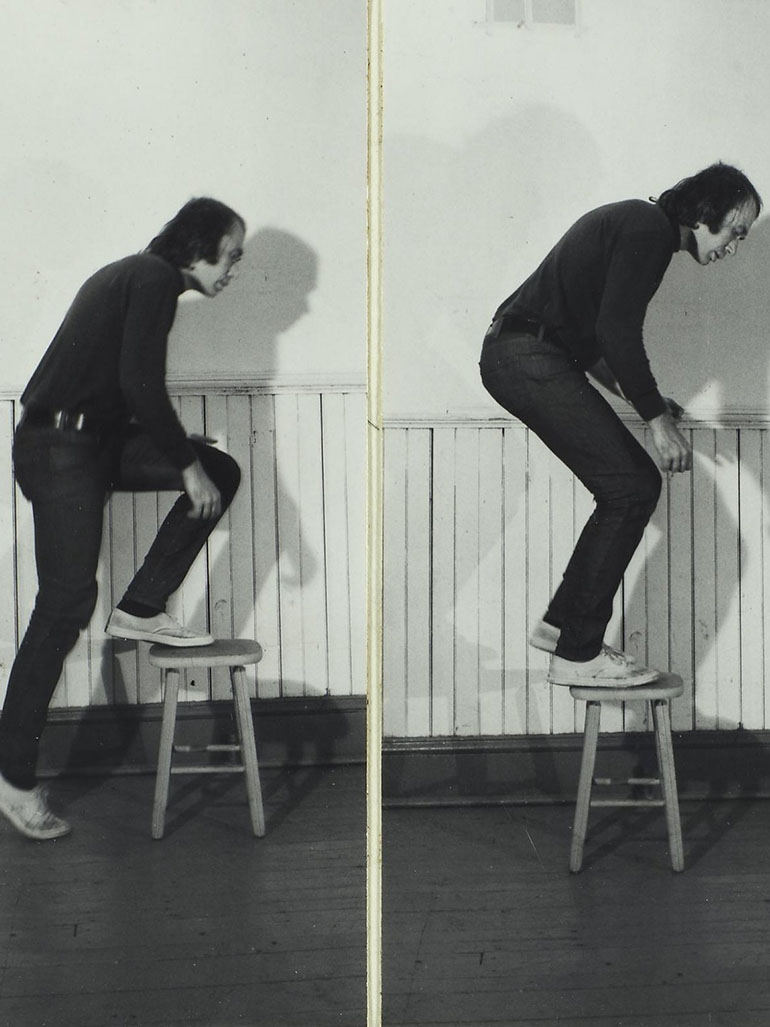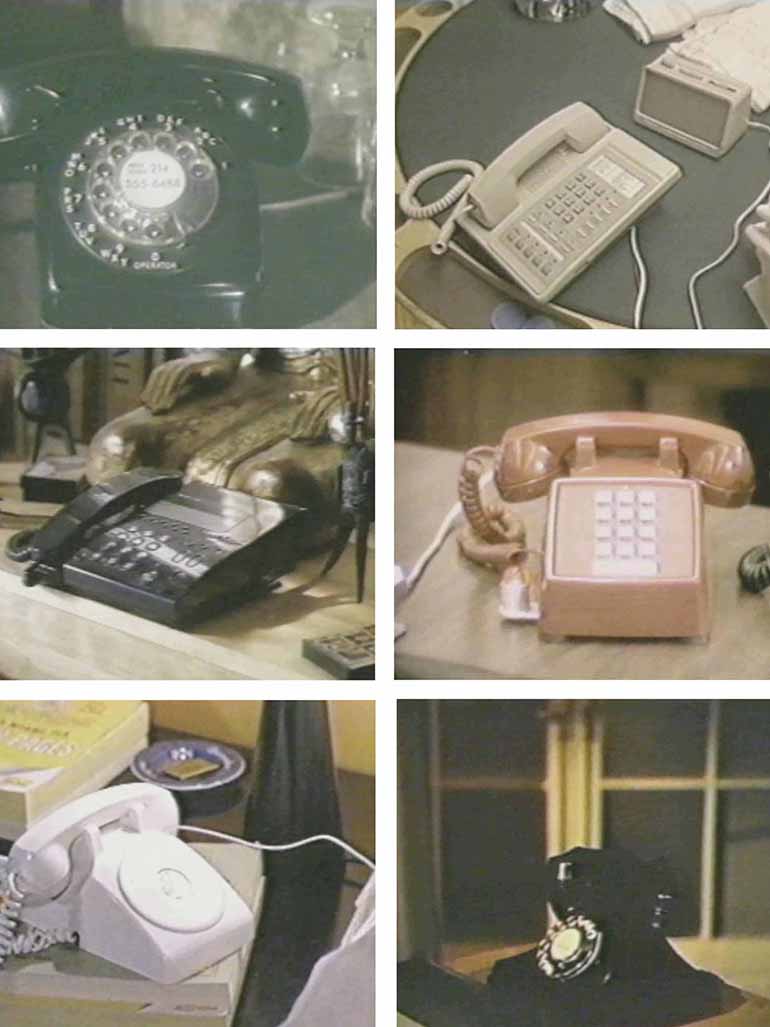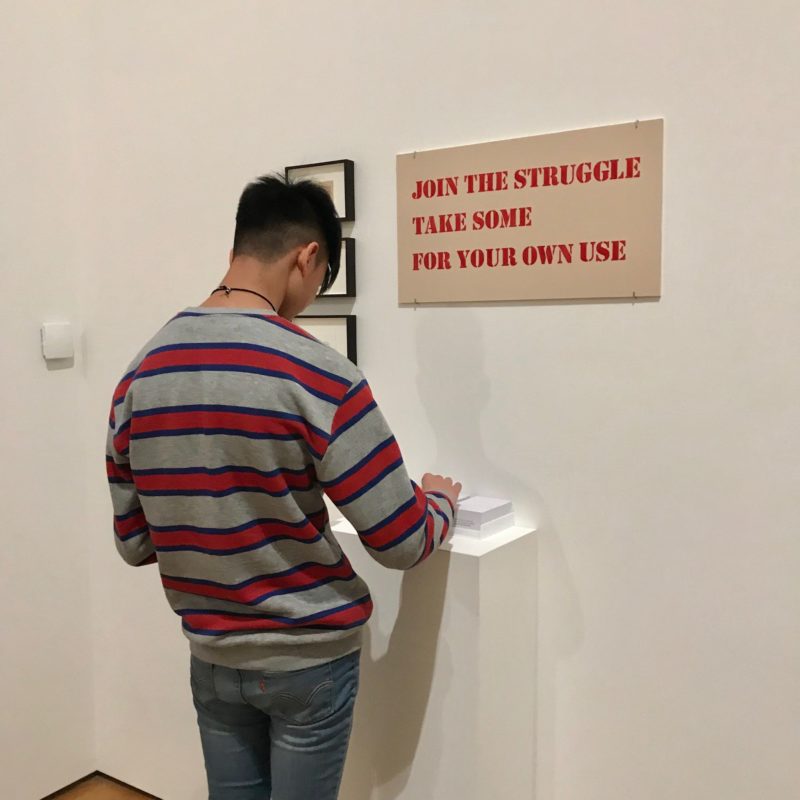
Introduction
We all have felt uncomfortable under scrutinizing gazes at one point in our lives and have been unable to call out people on it too. For that purpose, you may follow the steps of Adrian Piper and get yourself a calling card. Calling Cards are pieces of parchment of size 2x 15.5 inches, one of white color and the other of brown color. The white one addresses a woman as the lesser sex, and the brown one addresses people who pass racist comments. Receiving one of these cards usually makes the receiver uncomfortable.
The Calling Cards
My Calling card collection contains three unique art pieces by Adrian Piper. Adrian Piper herself is black as well as a white woman. She could not take the racist comments people inflicted on those who weren’t white. The calling cards were Piper’s way of telling people who she is as people sometimes didn’t recognize her as black. This was also a way to tell people what she thought was acceptable in society. In the calling cards, she explores identity and sexuality.
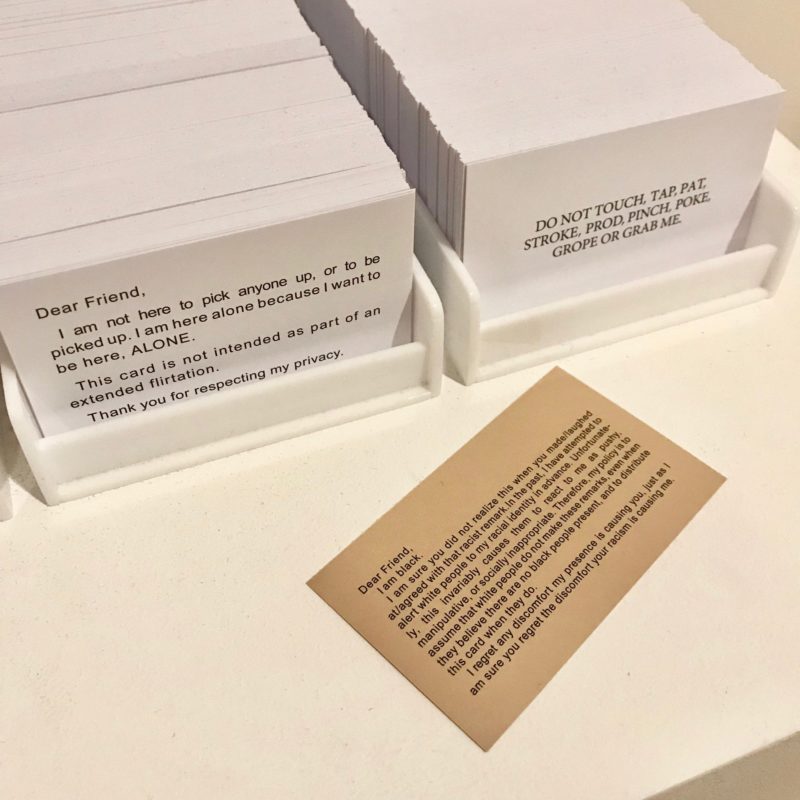
The first card (white)
So, taking a very passive-aggressive approach, she made three calling cards. One of the calling cards is white and approaches the subject of women who are unaccompanied at the bar are not to be looked upon as prey. This calling card refers to many men who think that a woman sitting alone at a bar is looking for a companion.
However, the card is made to be handed over to these men that the woman must be left alone and does not require their help. This calling card referred to the woman as an independent being that can go out without any man needed to accompany them. The card also asked the receiver to respect her privacy and leave her alone if she is alone.
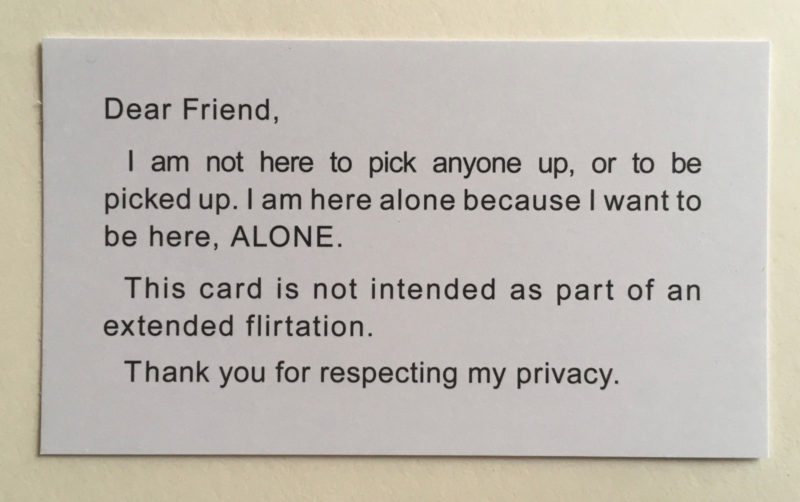
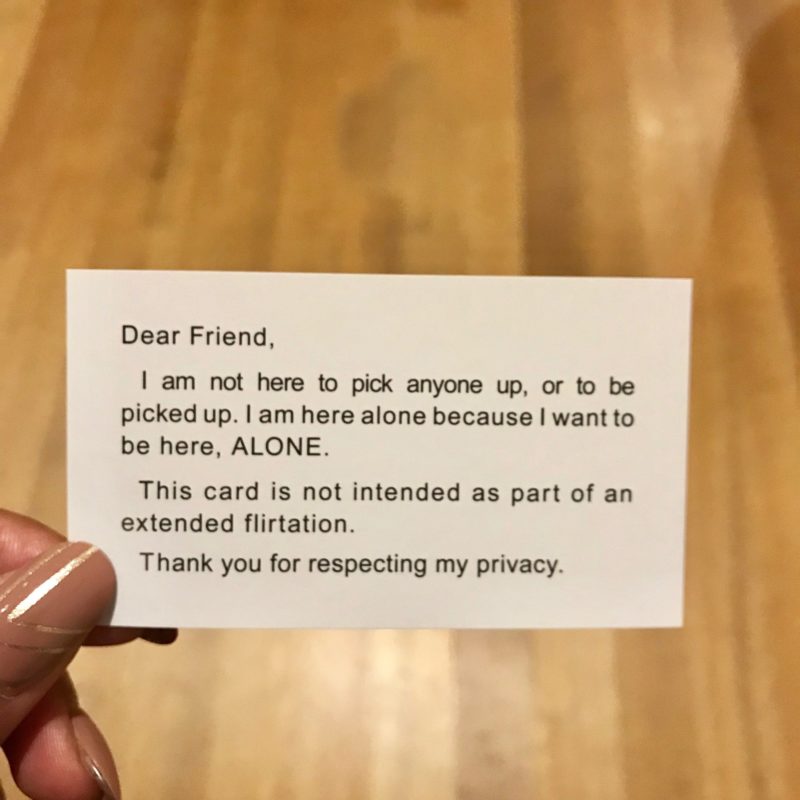
The second card (brown)
The second calling card refers to the racist comments thrown towards black women. Adrian was a light-colored black woman, so people often didn’t realize she was black and made racist comments in front of her. This situation angered her and so Adrian Piper herself, being a light skin African American took offense towards these people who threw racist remarks at her or others. These cards helped to call out someone racist without making a show of it.
It also helped her to identify herself as a black woman in a social situation. She would hand over this card, which would admonish them to treat her as a human being. From 1986 to 1990, Piper handed out these cards to people when she was stuck in one of the mentioned situations.
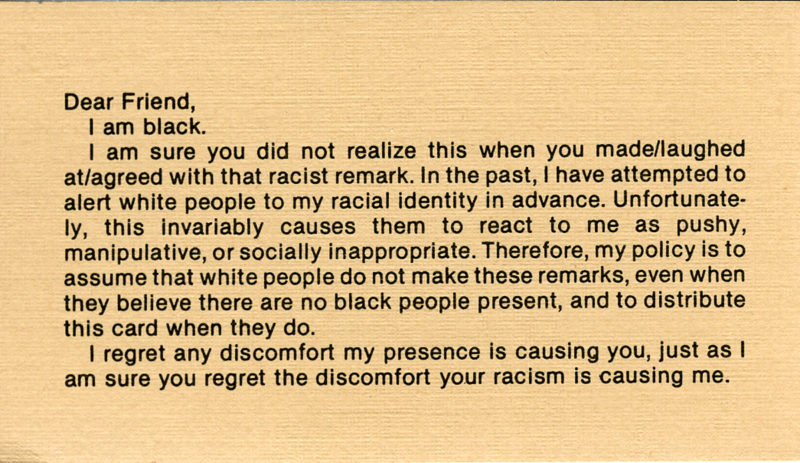
The third card
Piper’s third card is called My Calling (Card) #3: Guerrilla Performance for Disputed Territorial Skirmishes. and was created in 2012. One side of the card reads: DO NOT TOUCH, TAP, PAT, STROKE, PROD, PINCH, POKE, GROPE OR GRAB ME.. The other side reads: FASSEN SIE MICH NICHT AN. (Don’t touch me).
Analysis
Piper’s Approach
Piper’s approach explores social boundaries and personal identity. She uses an upfront approach and calls everything that it is without any reluctance. Some may find her work disturbing, but the truth is that it is equally thought-provoking. Her work can make people uncomfortable because she has politically charged views due to her being a conceptual and performing artist. In the 1970s, she dressed as an African American man to expose all the people who passed racial comments.
These calling cards helped Piper in social situations where she could not say things out loud and create a scene. She tries to remove any prejudgments people have about her as a black woman, and she also tries to break stereotypes and social norms. The cards help one ponder over their words and think about how their words might have hurt someone. The receiver is allowed to contemplate the proper way to treat a particular group or gender.
What the cards represent
The calling cards symbolize a constructive way to make people ponder over their actions. They help them identify the wrong in their behavior. People who must have seen the calling card performances must be affected as well. Not only the receiver is affected by the whole performance but the audience as well. They notice how the situation unfolds, which leads to them contemplating their own actions too. In the end, not just one single person is impacted, but the people in the surroundings are also affected. This leaves an impression on all.
Piper’s idea was that people could do a lot with paper and also deliver a message across. She would want to keep the calling cards alive because they spread a message that our society needs to learn.
Why does this work matter?
Adrian Piper has other notable works like “The Mystic Being” and “The Concrete Infinity Square.” But the Calling Cards remain most notable. Piper used them unannounced to change the perspective of society.
Piper’s idea behind these cards is that the focus must not lie in the cards but the idea behind them. Her work created social mindfulness and awareness of how to deal with other groups of society. The cards developed a sense of responsibility in society to not differentiate people based on race or sexuality. A woman must not be disturbed if she is alone at a bar.
Conclusion
Even a couple of decades later, the calling cards refer to the same social issues that still exist in our society. Some of us even face them regularly. Piper’s work may have a different meaning for different people, but this one will continue to spread the same message every time. Some of these calling cards are now with the Indiana University Art’s Museum. They continue to tell the story of how brave Piper had been in the last century to call out people on their racist and sexist remarks.
In the 21st century, both of the issues addressed by Piper are of great importance. They are some of the core issues our society is working on. We can try by taking Piper’s approach to eliminating these social problems from our society.


